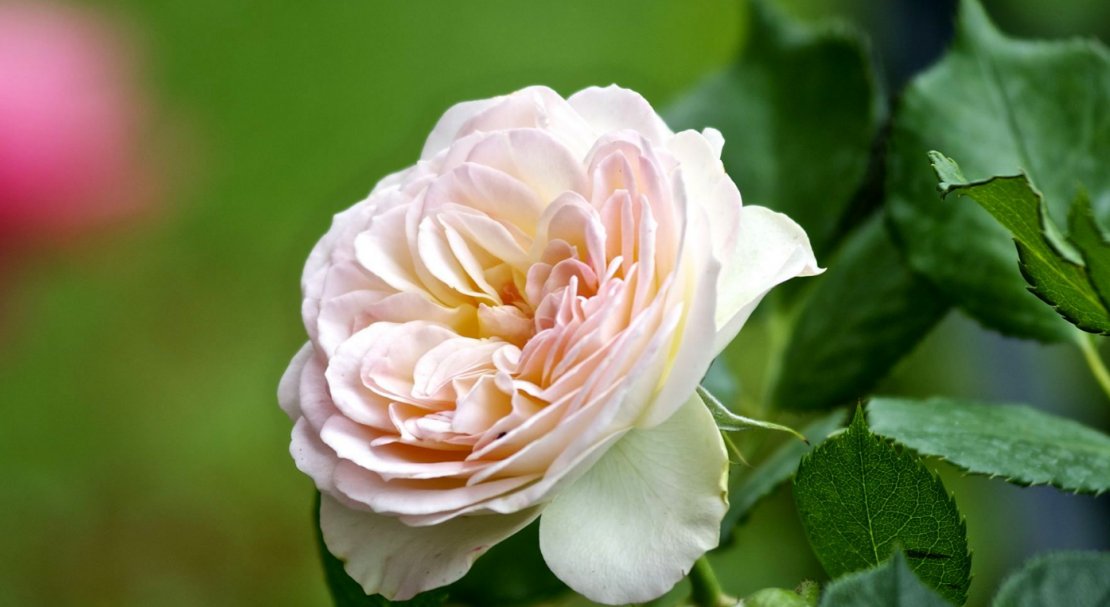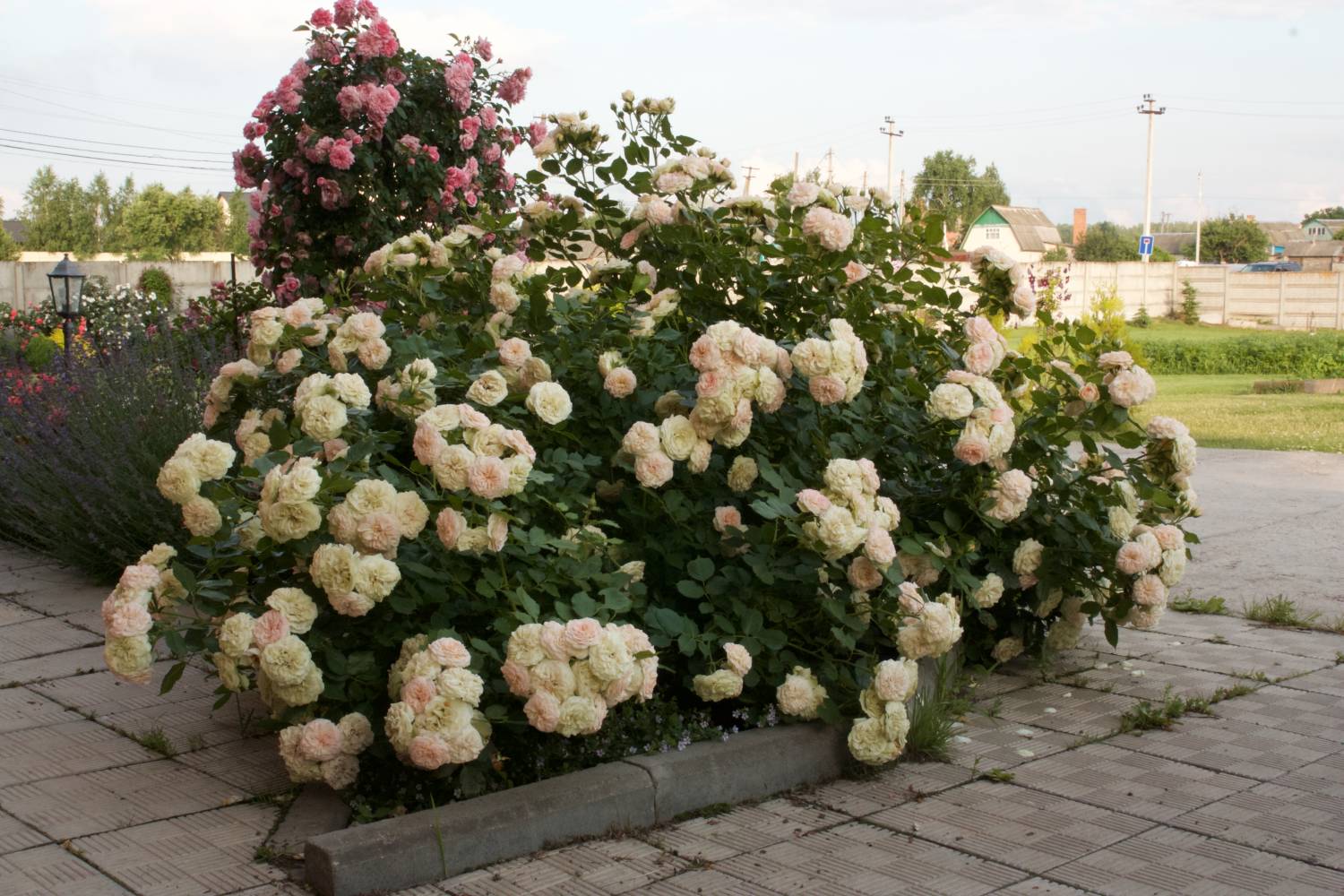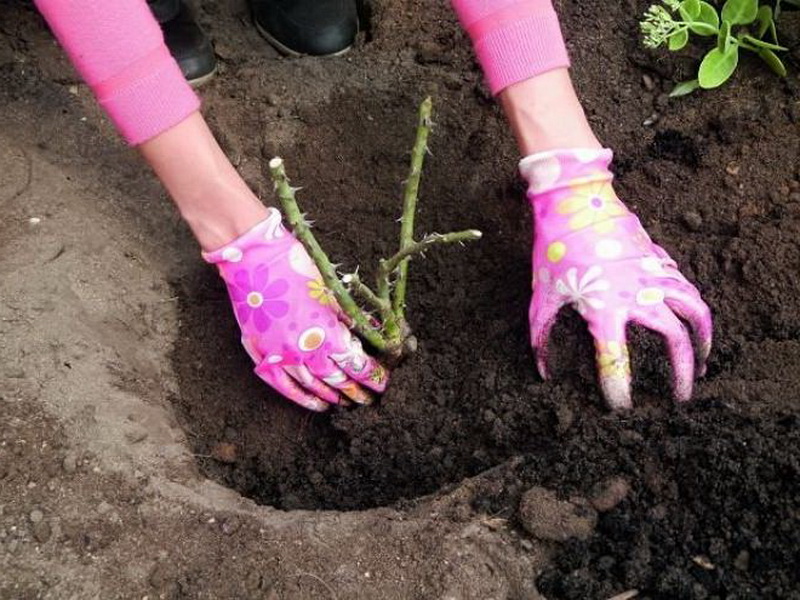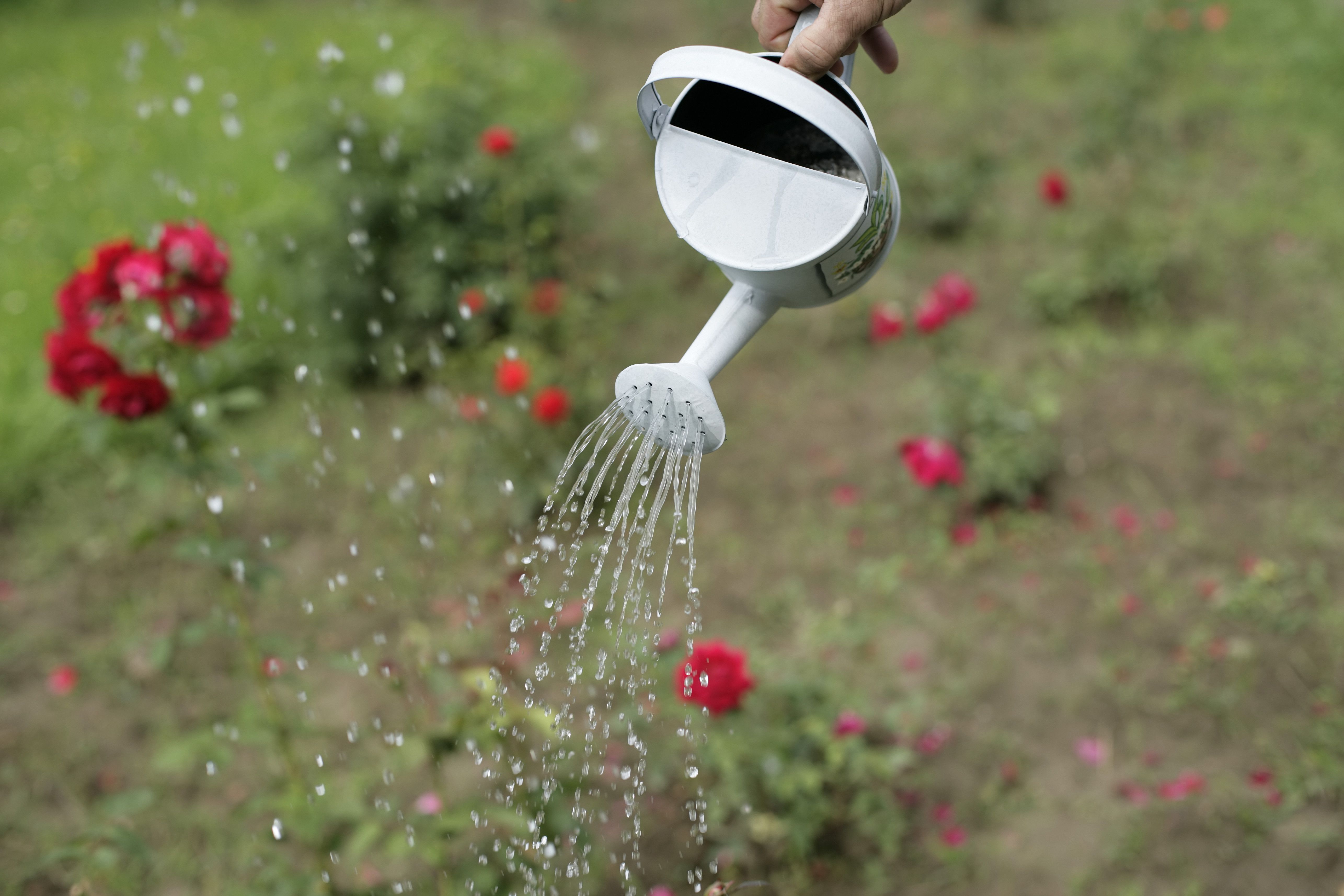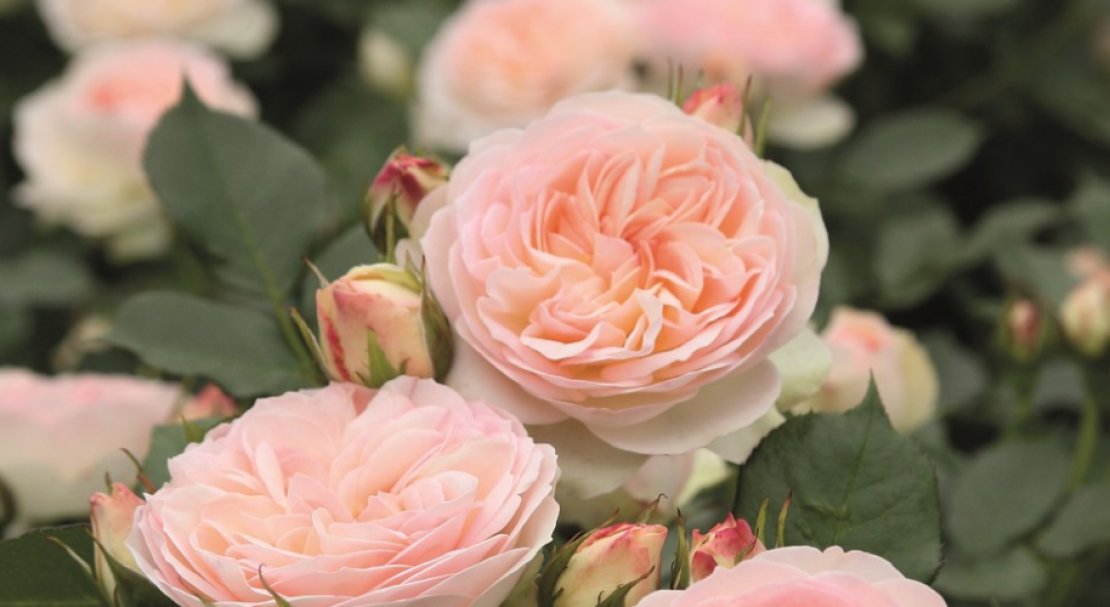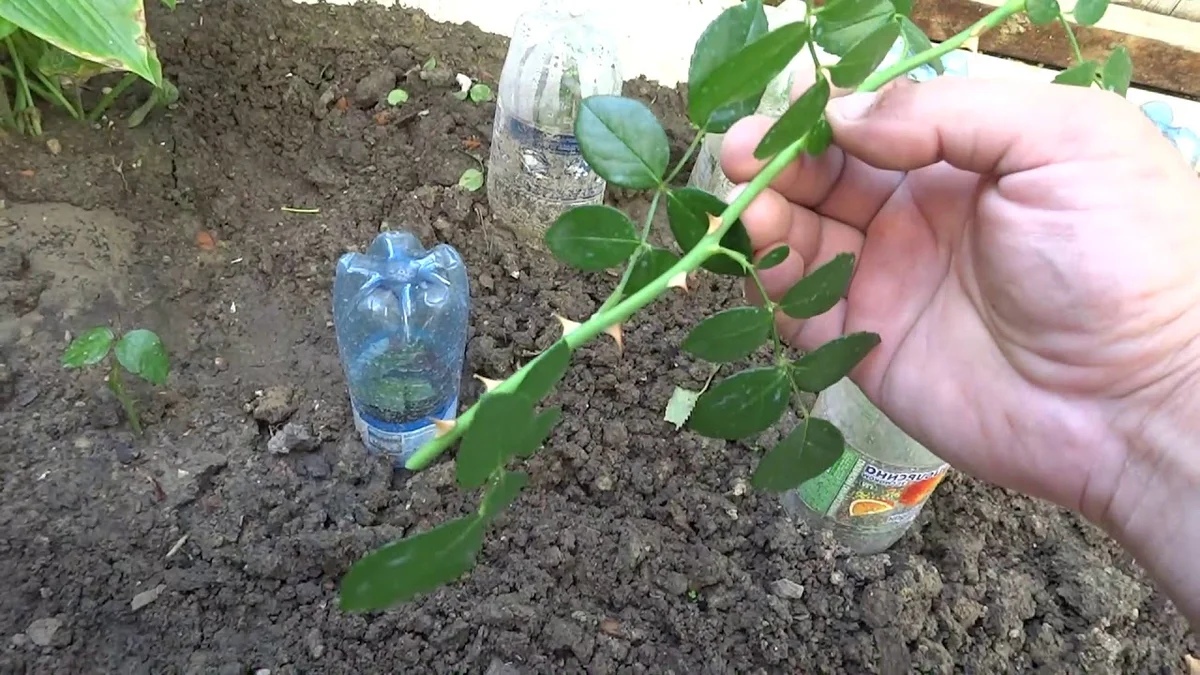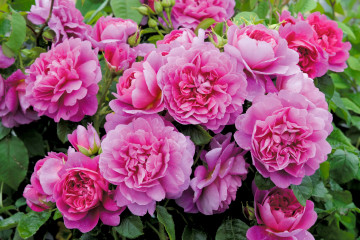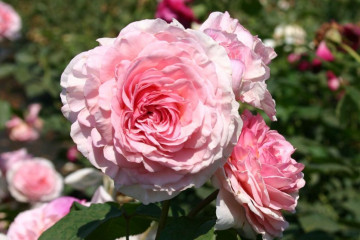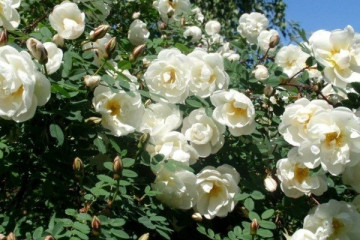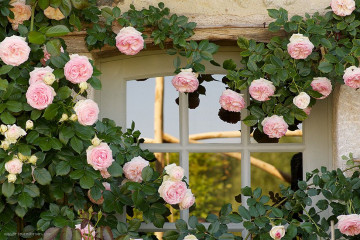Rose Pastella (Pastella) - description of a profusely flowering variety
Content:
Among the many varieties of roses, there is a specimen for every taste and for every garden. Especially attractive are flowers that are both beautiful and easy to care for. Rosa Pastella is one of those.
Rose Pastella (Pastella) - what is this variety
Rosa Pastella is a member of the floribunda group. It is bushy, compact, branched with light green dense foliage. The bush grows up to 60 cm in height. Flowers are medium in size, cupped, bloom in clusters of 4-8 flowers. Painted in cream tones, the middle is pale pink. There is a pink coating on the edges of the petals.
The color saturation depends on the weather. The color of the rose gradually changes: at first it is creamy, then turns into pink tones, after which it turns white. Pastella rose has a pleasant, spicy scent.
The main advantage of a rose is long flowering: the bush will release new buds throughout the summer.
The disadvantages include weak frost resistance.
The description of the variety says that Pastella rose is suitable for decorating borders, grown in rose gardens and specimen plantings. To highlight blooming roses in the composition, they are surrounded by evergreen shrubs. Suitable for decorating the lawn.
Growing a flower
Pastella is planted with seedlings. Before planting, the purchased bushes are protected from direct sunlight and monitored the moisture level of the earth with the root system.
A rose is planted in autumn or spring. When planting in the fall, it is covered for the winter, so that during the cold weather the root system gets stronger. But it is preferable to plant seedlings in the spring, in May.
Seat selection
The place is chosen sunny, well-ventilated. The rose feels great in the morning or evening sun, but prolonged exposure to direct rays can provoke burns.
How to prepare the soil and flower for planting
The soil should be fresh, not acidic and fertile. Chernozem or loamy soil is good (it requires additional organic fertilizers). Clay and humus are added to the sandy soil. If the acidity is low, manure or peat is introduced, if, on the contrary, it is high, ash is added.
Additionally, fertile soil is applied during planting.
Before planting a seedling, its roots are left in a clay solution for several minutes.
Planting procedure step by step
How to plant Pastella outdoors:
- Dig a hole: 60 cm in depth and diameter.
- Make a drainage layer at the bottom of the hole.
- Add fertilizer (compost or manure) with a layer of at least 10 cm.
- Cover the garden soil with a layer of at least 10 cm in the form of a dome.
- At the prepared seedling, spread the roots, lower them into the hole and gradually cover them with earth, simultaneously tamping slightly.
- Water the seedling.
- Mulch the soil. For these purposes, peat is suitable.
Plant care
The flower is drought tolerant and does not require frequent and abundant watering, but additional irrigation will be required in extreme heat. It is also necessary to loosen the soil and remove weeds.
Top dressing and soil quality
Nitrogen (in spring) and phosphorus or potassium (in summer) are used for feeding. It promotes lush flowering.
Pruning and replanting
Pruning is carried out several times a year. For the first time, the flower is cut in the spring, removing the stems that have died in the cold and broken. In summer, after flowering, faded buds are removed, thereby making room for new ones. In the fall, diseased stems are removed and the overgrown bush is cut off.
Roses are transplanted in spring or autumn (preferably in spring). The reasons can be:
- unsuitable soil;
- unsuitable neighbors;
- overgrowth of the bush;
- waterlogging of the soil.
If a bush needs a transplant, it begins to bloom worse, grow poorly, the flowers become smaller, and the leaves turn yellow.
Before transplanting, the bush is watered abundantly. Then it is dug up together with an earthen lump. To transfer to the desired place, use a cloth (periodically moistening it). Further, the soil in the new site is fertilized, a hole is dug and a bush is planted in it.
Features of wintering a flower
Floribunda Pastella rose is considered not very hardy. They cover it before the onset of frost. The bush is preliminarily earthed up with earth. And then everything is covered with spruce branches. After that, the bushes are surrounded by a wire frame, on which a non-woven material or polyethylene is attached.
Blooming rose
Pastella blooms throughout the summer. During the period of activity, it should not be heavily watered or fertilized. After flowering, a dormant period begins. At this time, the growth of the bush also stops. You cannot water and fertilize it.
Care during and after flowering
During flowering, you only need to monitor drying buds and remove them in a timely manner, making room for new ones. If the summer is hot, additional watering is required.
What to do if it does not bloom
If the bush does not please with the promised flowering, you should not blame everything on a bad seedling. There are other reasons for the lack of flowers.
- Old bush. Its stems become dry and woody and unable to deliver nutrients from the soil to the crown.
- Young bush. In the first year of life in a permanent place, the rose has every right not to bloom. If this does happen, it is recommended to remove the primrose. You can leave a few in August when the plant gets stronger.
- Parasites and diseases. If they are available, you should not expect lush flowers. Treatment of the bush is necessary.
- Inappropriate place. This refers to bad soil, competing neighbors that take away nutrients, and strong drafts. You should take a closer look at the conditions, perhaps the flower needs a more suitable place.
Flower propagation
To preserve the varietal characteristics of the flower, pastel roses are propagated vegetatively or by cuttings. In general, roses can be propagated:
- cuttings;
- layering;
- seeds;
- budding.
Depending on the type, reproduction is carried out at a certain time:
- cuttings - spring, autumn;
- bends - spring, summer;
- seeds - spring.
When grafting, cut off good, strong branches. During spring reproduction, they can be placed in a container with a root-forming stimulant and, after the appearance of roots, planted in open ground. In autumn, cuttings are wrapped in peat and paper and stored in a cellar or refrigerator until spring.
When propagating by branches, the lateral stems are bent to the ground. Cuts are made in the middle of the stem. With this part, the stem is placed in the hole, sprinkled with earth and watered.
Seed propagation of roses is a long and complex process.You need to make sure of the quality of the goods, prepare the seeds for planting and plant in the spring in April. Germination rate is low: you need more than one packet of seeds. In addition, roses grown in this way do not bloom for a long time.
When budding, the rose is grafted onto the donor and it begins to use the root system of the rootstock.
Diseases, pests and ways to control them
Of the pests, the rose can be attacked by:
- aphid;
- weevil;
- spider mite;
- rose-colored sawfly.
For prophylaxis in the spring, the plant is treated with fungicides. The diseased parts are removed from the affected bush, the healthy ones are treated with iron vitriol or Bordeaux liquid.
Among the diseases, the appearance is possible:
- powdery mildew;
- rust;
- spotting;
- gray rot.
Pastella is distinguished by its unusual color, which can decorate any garden. With timely, easy care, the rose will delight you with a long, lush flowering and will become the pride of the flower garden.
